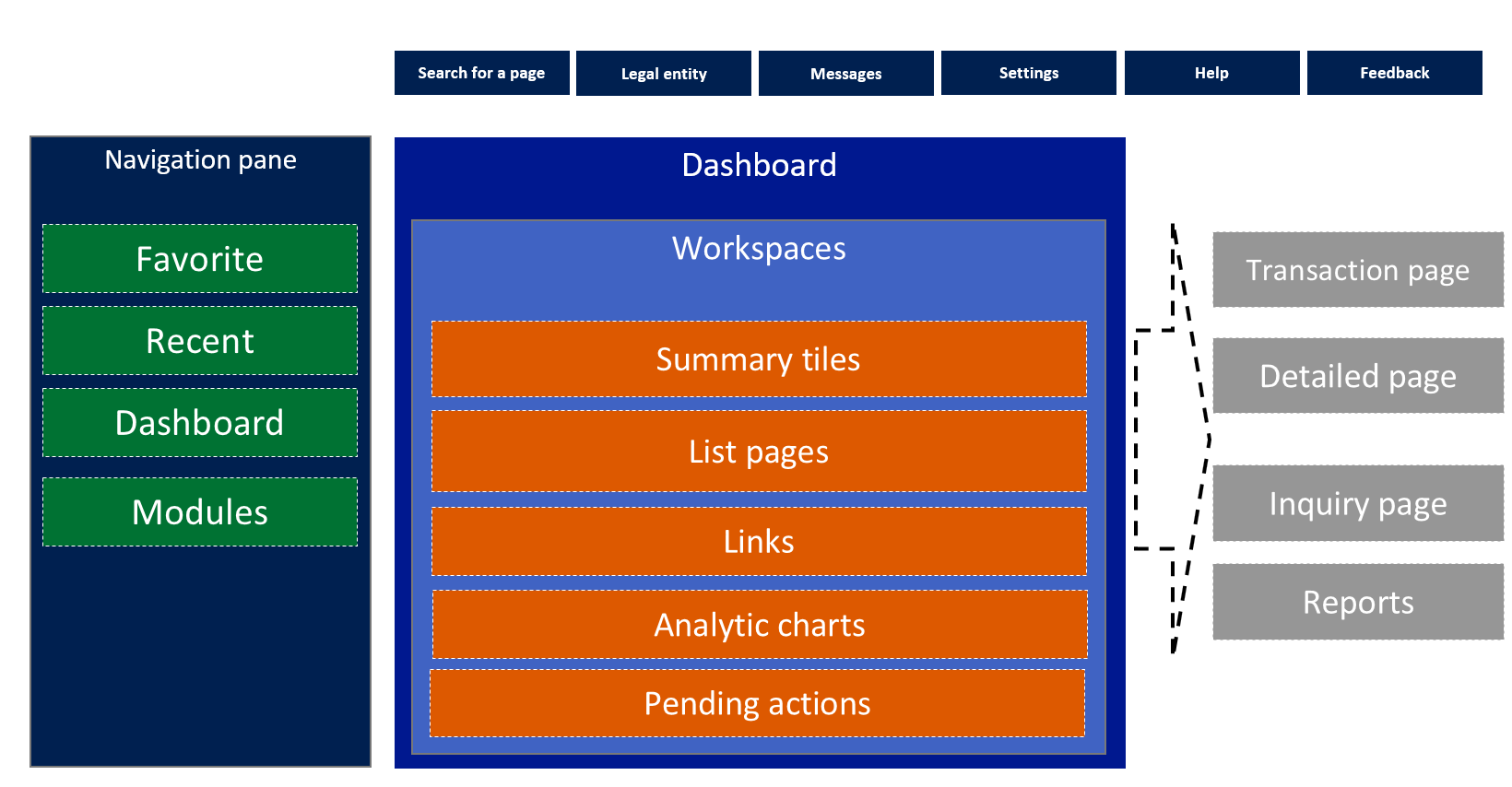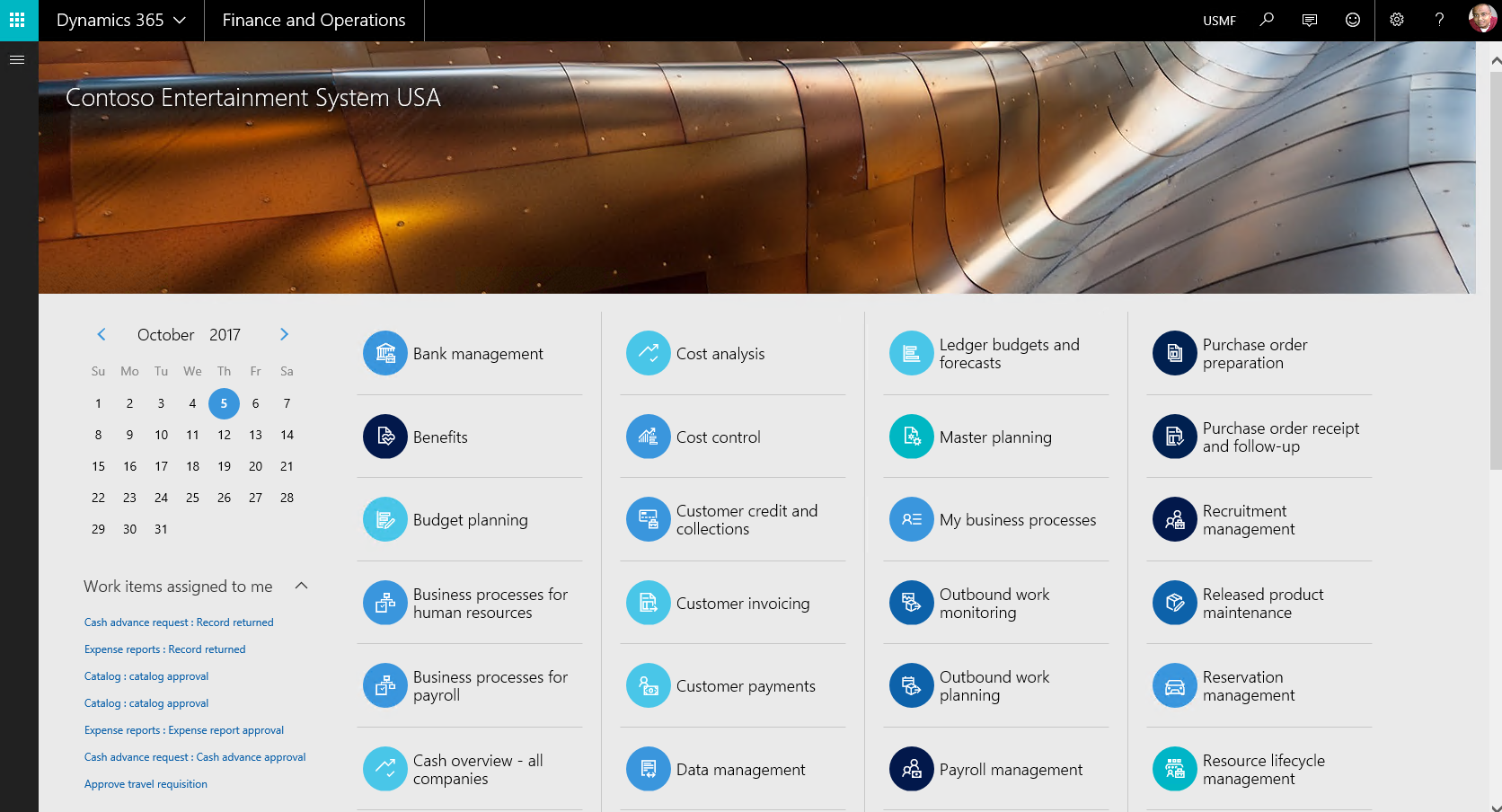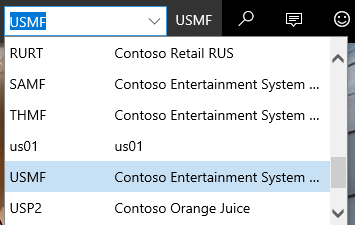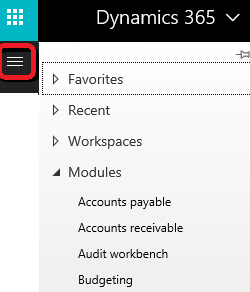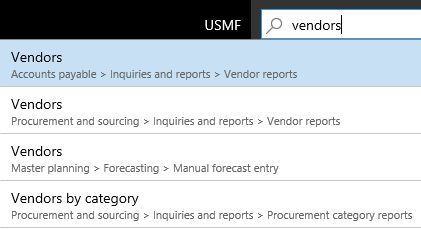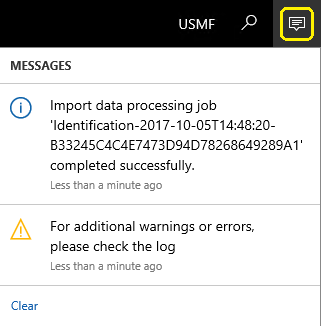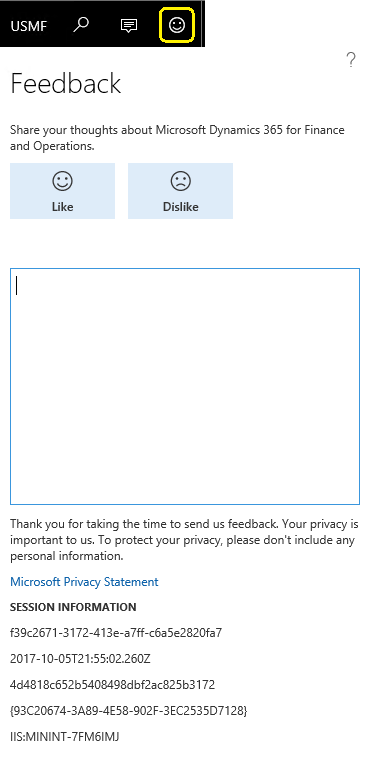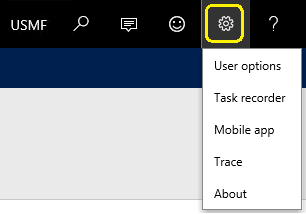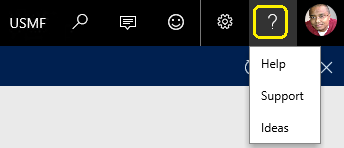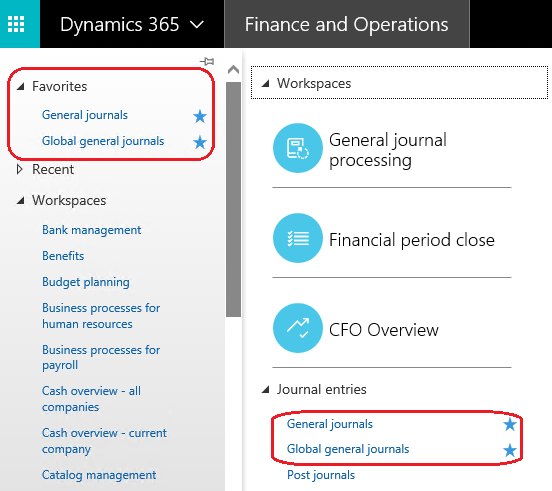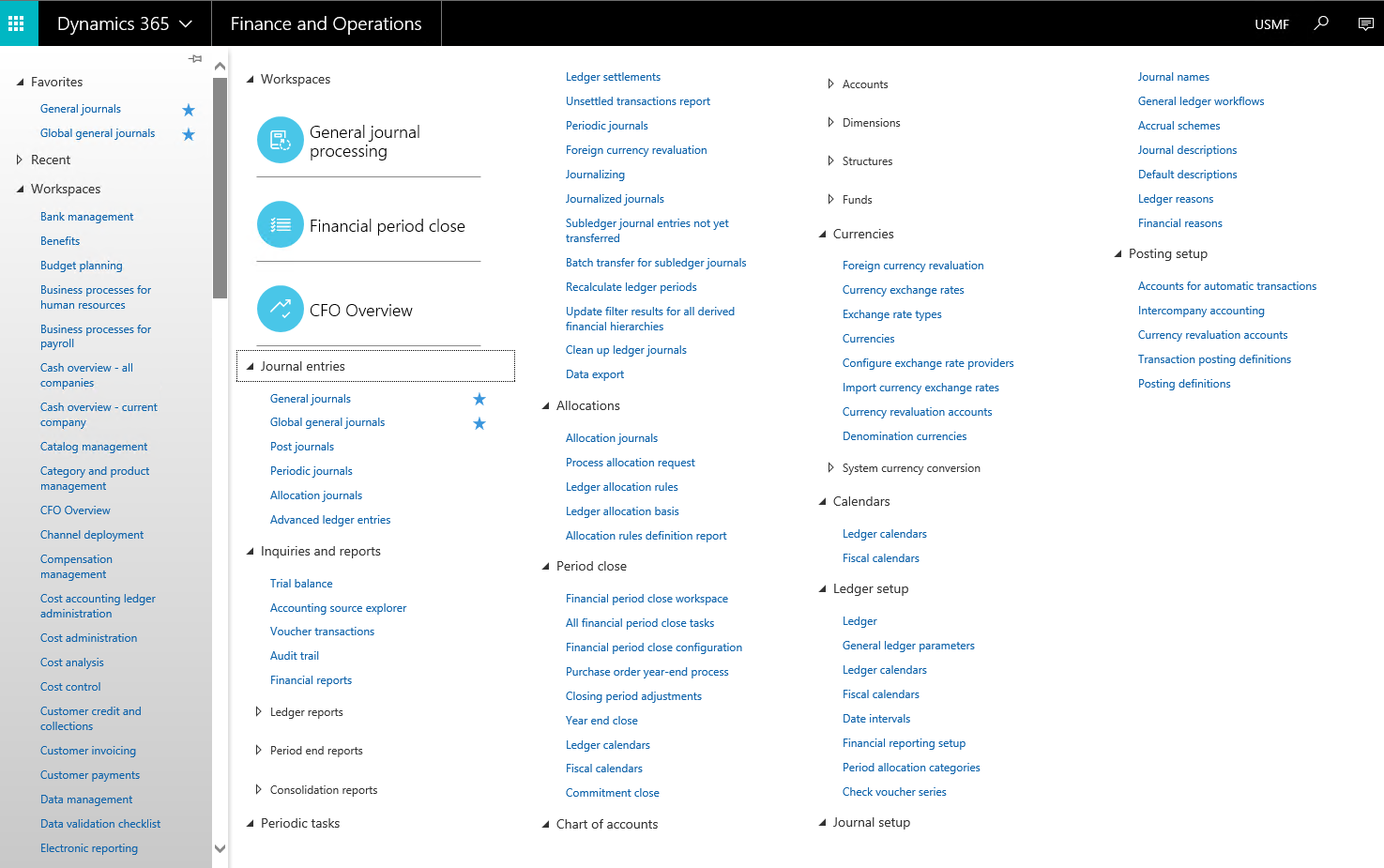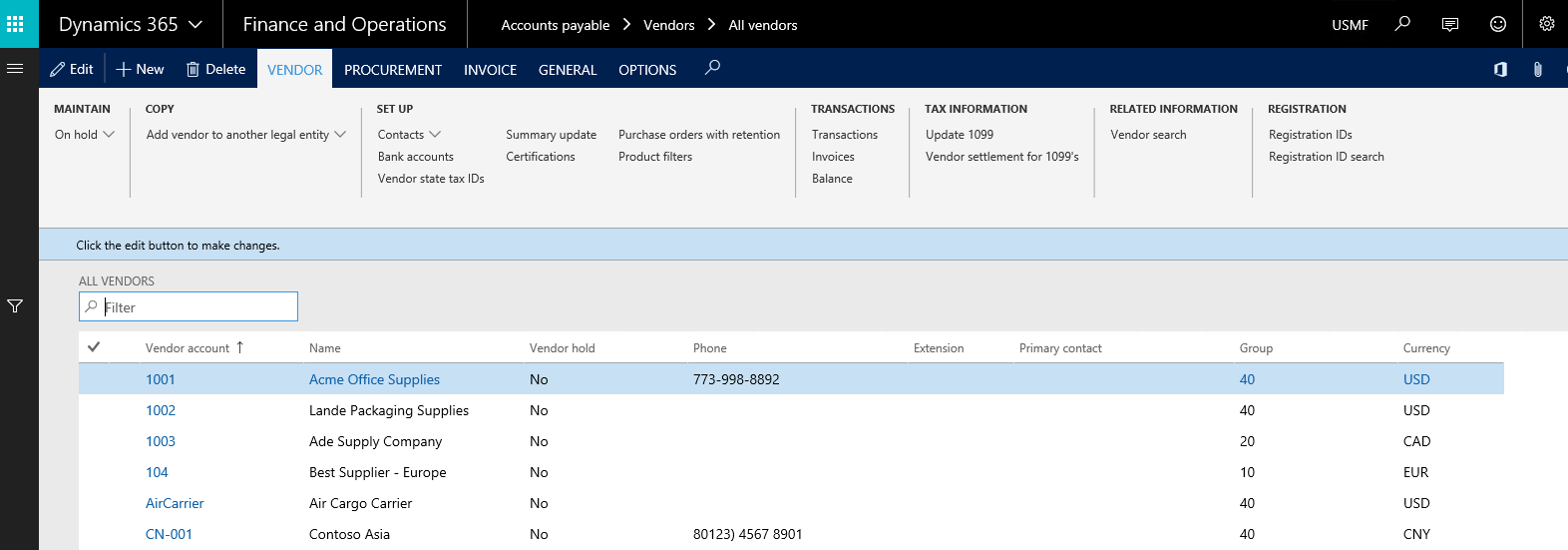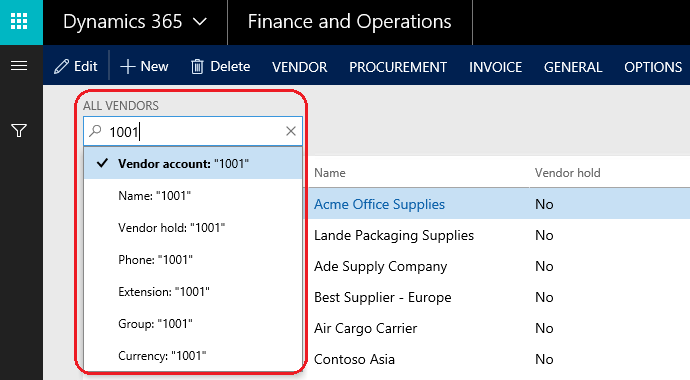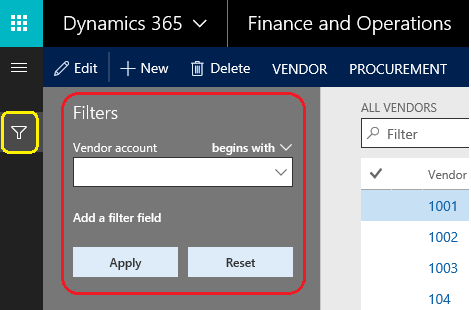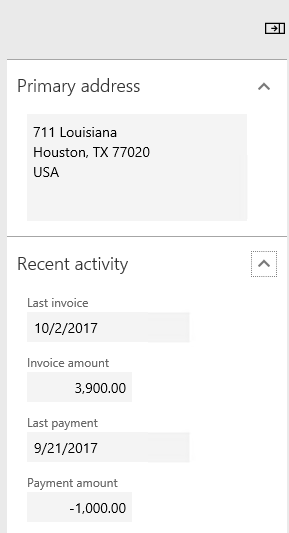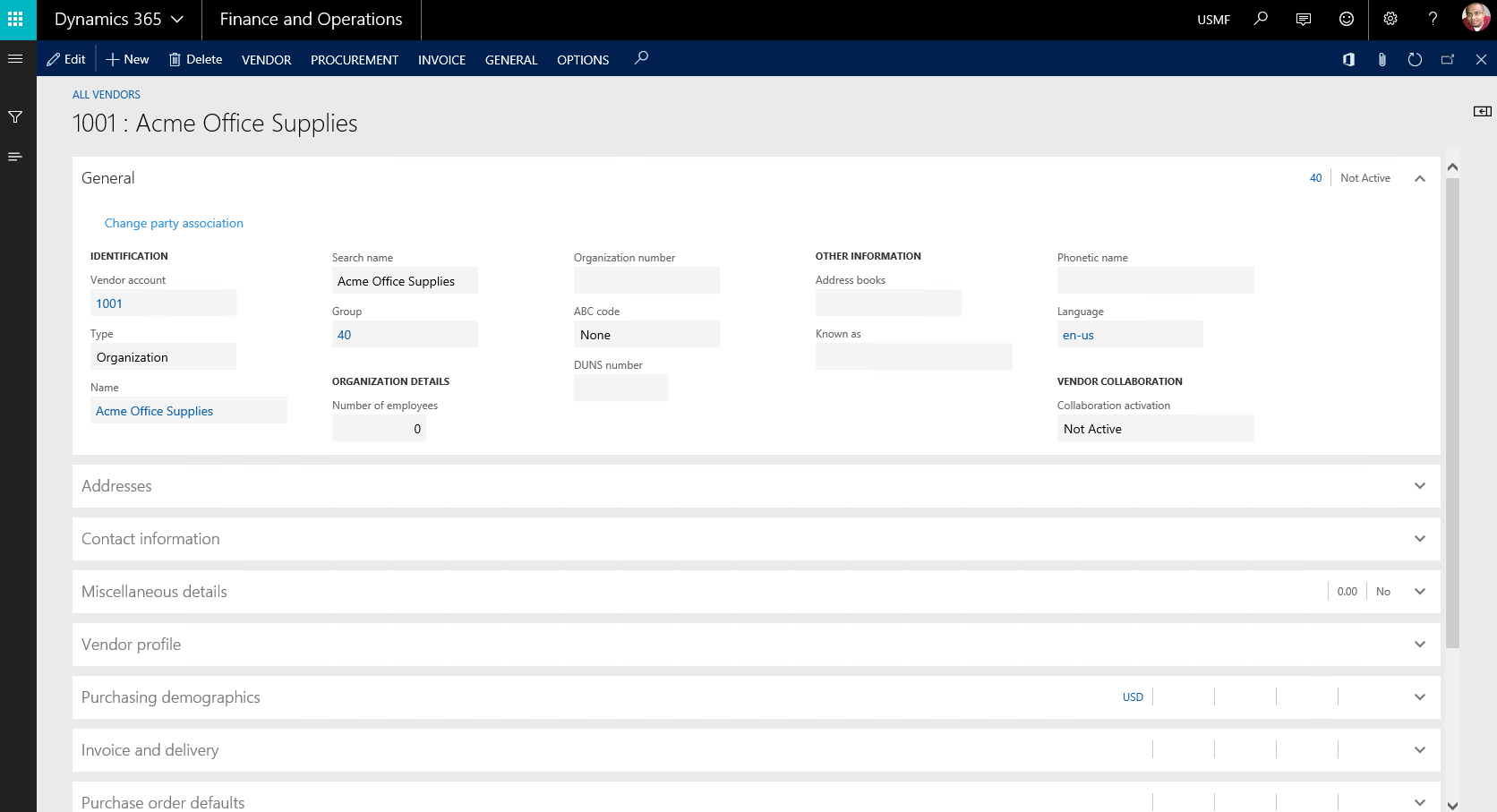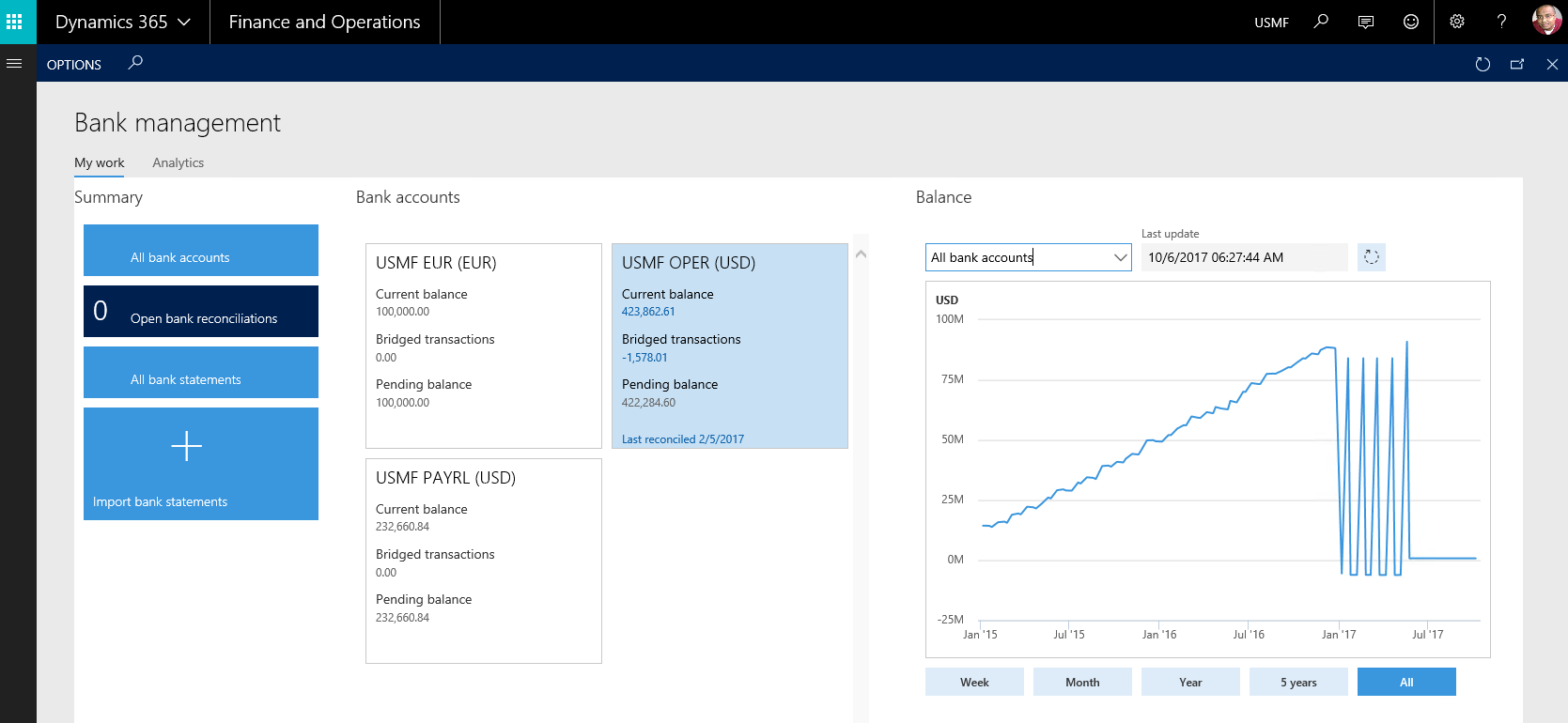The Enterprise Resource Planning (ERP) application is a must for companies, irrespective of whether they are a small or big enterprise; it is a tool that gives visibility to management regarding the enterprise's performance on all levels. People should be familiar with the ERP concept, no matter who implements the solution or uses it (definitely, the level of detail varies between the user and the consultant, but the core is common). This chapter covers the following topics:
- Understanding ERP characteristics
- Discovering the ERP implementation team
- Exploring key intentions for ERP implementations
- Understanding the ERP module's integrations
- Exploring ERP and reporting
- Posting types in Microsoft Dynamics 365 for Finance and Operations
- Exploring common terms used in ERP implementations
- Exploring the Microsoft Dynamics Implementation Methodology – Sure Step
- Exploring Microsoft Dynamics Lifecycle Services (LCS)
- Looking at the Microsoft Dynamics 365 for Finance and Operations user interface
ERP is a mission-critical application for business, as day-to-day activities rely on this application where the end users enter transactions and the management is able to monitor the business performance on a daily basis and take decisions within a proper time period. The ERP application has different characteristics from any other application, and these characteristics are mentioned in the Wikipedia definition:
"A business management software-usually a suite of integrated applications-that a company can use to collect, store, manage, and interpret data from many business activities."
From this definition, ERP is an integrated application. In the past, each business area had its own application, and this led to the creation of isolated islands for each department in the same organization; these cost the organization time, effort, and money. This led to a lack of accurate information, which directly affects management decision making, because of the unavailability or redundancy of information; for example, a customer account in accounts receivable (Finance department) is different from a customer code in the Sales department, so the management can't identify the customer's balance. With ERP, the data is unified, controlled, and classified. This gives the company the ability to transform this data into information that helps in the decision-making process. In the modern world, the deployment of ERP has been moved to the cloud as a reaction to rapid customer business needs; the cloud provides the opportunity for business to respond to business scalability, reliability, and agility. The ERP application has taken its position in cloud technology, and we are witnessing an evolving revolution, and we contributing to it.
It is important for companies that want to implement ERP to understand that its implementation is not an easy task and it requires dedication, investment, and a professional partner. For example, Value Added Reseller (VAR), which has a consulting team experienced in implementing ERP, preferably has a partner that is an expert in the customer industry. On top of that, the customer should have a close engagement between management, key users, and end users during the implementation project. The implementation team is considered to be the key success factor for the ERP implementation.
The following diagram illustrates the ERP implementation team that consists of Subject Matter Experts (SMEs) and key users from customer- and partner-side applications and technical consultants. This team works together closely during the implementation, where the customer representatives (SMEs and key users) deliver the business requirements (that is, what they are expecting from ERP), with the consulting team that bridges the gap between the business requirements and the implemented application. This comes through several workshops via analysis, design, development, and testing. Microsoft plays a role in the implementation life cycle; the FastTrack team from Microsoft is a customer program that works on the implementation from the beginning to ensure safe onboarding for the customer to the cloud solution.
Note
In order to check the full FastTrack service offering, you can go to https://fasttrack.microsoft.com/dynamics.
The Microsoft Support team works directly with partners and customers on support requests, and there is also a newly introduced team which is responsible for service requests that are related to the production environment:
The implementation team should focus on two types of internal client: business executives and end users. Each client has a different perspective of the ERP implementation, and the implementation team should consider their requirements during the implementation life cycle. The executives' management focuses on reporting and end results, and the implementation team delivers policies and procedures to end users, who then operate the final product, which is the ERP application.
Application consultant, functional consultant—the job title differs from one company to another, but whatever the title is, the person doing this job around financial and ERP software is considered as the middleman between the application and the technology, as well as having the key role of driving the adoption of a new technology by the business. The application consultant can start their career after graduation from university; they can major in business administration, finance, or information systems, if it covers a subject related to business.
Alternatively, the application consultant can start working in other fields. Some people start out as an accountant, procurement agent, commercial agent, or even sales representative. I do not consider it a career shift; I consider it as an advance in your career path. In other words, it is capitalizing on previous experience.
Traditionally, consulting skills are divided into two main areas: the business side, which is related to business aspects, and the technical side, which is related to the technicality of ERP. Then, there is a more general soft skills set that all application consultants need, as they spend most of their time in discussions, workshops, and training, related to business.
Some of the key skills that a company should look for in an application consultant, broken down into business side, technical side, and soft skills, are highlighted in the following diagram:
Application consultants have a very important role in the ERP implementation project, as they are involved in implementation tasks and activities. Microsoft Dynamics Sure Step has defined the application consultant role during implementation phases. It is a long and broad list of tasks, and this range of tasks is what I believe keeps most application consultants motivated and satisfied with their jobs. The challenges are always changing and the career path offers many opportunities to develop new skills.
Enterprises that intend to implement Microsoft Dynamics 365 for Finance and Operations Enterprise edition pursue a variety of common benefits from ERP, but in most projects there are no well-defined benefits that the organization's management agreed on, and no roadmap to help them accomplish those intentions. It is vital to plan an ERP implementation carefully. In the sections that follow, we will look at the key objectives of ERP implementation.
An organization can have a legacy system and manual business processes, and they need to be unified by one single integrated application to manage, operate, and control the business areas and deliver reports to management, as shown in the following diagram:
Enterprises that have decided to implement ERP should be coordinating together with a consulting partner specializing in Microsoft Dynamics 365 for Finance and Operations. The customer and partner should plainly outline the objectives of the ERP solution as early as possible in the diagnostic phase. They can replace the legacy system and reduce manual business processes by automating the business processes using the ERP solution in organization departments. Samples of ERP implementation intentions are as follows:
- Business process: This comprises the following:
- Business process automation
- Streamlined business process in cross-function operations
- Unified business process across holdings and subsidiaries
- Single point of contact for reducing redundant data within departments
- Controlling: This comprises the following:
- Segregation of duties and data access privileges
- Advanced workflow and approval matrix ceiling
- Tracking the actual costs against budgeted
- Inventory tracking and cost control
- Decision support: This comprises the following:
- Real-time and ad hoc reports for all organization levels
- Dynamic and dimensional reports
- Key Performance Indicators and indicator dashboard
The core objective of running a business is making a profit, which requires making revenue that covers the costs and adding a margin to secure a profit. The core role of management is to achieve this profit; the ERP application gives the management the necessary business insights to monitor business performance.
Microsoft Dynamics 365 for Finance and Operations manages and controls day-to-day transactions that occur in the company; these transactions are transformed into financial information that represents the key component of financial statements (balance sheet and income statement), which are expenditure and income; in other words, cash out and cash in. All these are shown in the following diagram:
The cash to cash cycle entails two core cycles, which are commonly known as procure-to-pay and order-to-cash. The first cycle covers the expenditure part (cash out), that is, every aspect related to vendor management, procurement management, purchasing management, product reception, and vendor invoices, payment, and settlement. The second cycle covers the revenue part (cash in), that is, every aspect related to customer management, sales management, product delivery, customer invoices, collection, and settlement. These activities could be distinguished by financial activities, that is, every aspect related to finance and accounting activities, and operations activities, that is, every aspect related to the company's daily operations of the supply chain.
Microsoft Dynamics 365 for Finance and Operations enables the module's integration when relating transactions to each other and can automatically inherit information from one and pass it to another after adding additional information, along with generating automatic financial entries in the general ledger and control points to monitor transactions. There is integration between the Microsoft Dynamics 365 Finance and Operations modules, where production modules are integrated with the inventory module, the warehouse management module and the sales and marketing module, in addition to the procurement and sourcing module.
The project module is integrated with the inventory module, the sales and marketing module, the accounts receivable modules, the procurement and sourcing modules, and the accounts payable module. This book focuses on core financial module and its integrations with operational activities.
The procure-to-pay cycle links the following business functions that are accountable for company expenditure:
- Procurement
- Purchasing
- Warehousing Product Reception
- Financial
- Accounts payable
- Bank management
The procure-to-pay cycle manages and controls the business processes of procuring the needed materials, receiving them, and paying to the vendor. There are specific documents to handle these business processes.
Financial transactions related to this cycle are product receipts, vendor invoices, payments, and settlements. The other documents relate to operations activities.
A product receipt represents the physical reception of products in the company warehouse. This increases the physical quantities in the inventory and reduces the quantity of the remainder in the Purchase Order, in addition to changes in the inventory value according to the inventory valuation method.
The vendor sends a Purchase Order invoice either along with product reception, or after product reception. Recoding the vendor invoice to reflect the company's liabilities to the vendor results in an increase in the open vendor balance. Microsoft Dynamics 365 for Finance and Operations supports the company's internal control of vendor invoices by matching the invoice with the Purchase Order and the invoice amount.
It can be either three-way matching or two-way matching. A three-way match is for a product purchases when comparing the Purchase Order quantity against the quantities in the vendor invoice. And comparing the purchase prince in the purchase order against the invoice amount. A two-way match is for services when comparing the Purchase Order amount against the invoice amount, vendor service invoices that are not related to a Purchase Order, and recoding the vendor service invoice to reflect the company's liabilities to the vendor.
The order-to-cash cycle joined the following business functions that are accountable for a company's revenues:
- Sales
- Warehousing Product Issuance
- Finance
- Accounts receivable
- Bank management
This cycle manages and controls the business processes of sales activities, customer orders, delivering goods, and collection from the customer. There are specific documents to handle these business processes: sales orders, the issuing process by packing slip, and finally the invoice document.
The related financial transactions to this cycle are packing slips, invoices, collection, and settlement. The other documents relate to operations activities.
A packing slip represents the physical issuance of products from the company warehouse. This decreases the physical quantities in the inventory and reduces the quantities remaining in the sales order.
After the delivery of goods or services to the customer, the sales team issues a customer invoice, increasing the customer open invoices. This affects the customer statement and customer aging, in addition to revenue recognition and the cost of goods sold.
Information technology before the cloud operated on-premises data centers, where the company takes care of every single aspect of the hardware, infrastructure, security, and maintenance operations. The company was responsible for procuring the hardware servers, installing and configuring them, and executing regular maintenance for upgrade and batching, in addition to safeguarding the information in the company data center. With cloud technology, companies can reduce a lot of expenses, time, and effort, where the vendor provides all required hardware, infrastructure, security and maintenance operations against subscriptions. Microsoft Cloud over Microsoft Azure technologies offers three different models and these will depend on the customer needs. The first option is Software as a Service (SaaS), the second is Platform as a Service (PaaS), and the third is Infrastructure as a Service (IaaS). The following diagram illustrates the difference between each offering along with the traditional on-premises offering:
If we look at the previous diagram from left to right, with the on-premises option the customer manages everything from the application to the lowest networking aspects. Moving to IaaS, the customer here manages the application, database and operating system, but the vendor will take care of the core infrastructure work storage, networking, and servers. In PaaS, the scope of the customer narrows to merely being responsible for the application, and runtime, with the rest of the stack being managed by the vendor. SaaS is the final offering where the vendor manages the whole stack of the application, and the customer is only consuming application usage. Microsoft Dynamics 365 for Finance and Operations is available on the SaaS model, and on-premises.
The ERP application moved to the cloud in response to the business needs of global reach accessibility, agility, scalability, and standardization. The cloud offering changed the game for ERP, shifting deployments from local on-premises servers to cloud data centers, managed by specialized professionals. The customer no longer needs to procure, operate, and maintain the hardware, infrastructure, and security. The cloud gives the customer the room to direct infrastructure resources, money, and manpower to business-related activities that impact customer efficiency.
Decision makers should think differently when it comes to an ERP-on-the-cloud decision. There are three main pillars that should be considered whenever a company has this discussion on the table:
- Total cost of ownership: A cloud ERP is accessed via a web browser from anywhere using any PC, rather than on-premises deployment, which requires building your own data center and infrastructure. The initial investment of the cloud ERP is lower than the on premises, which requires upfront investment. The time to deploy the environment on the cloud is a great deal faster than on premises; it is an automated process and is monitored by Microsoft.
- Upgrades and maintainability: Upgrades are smoother than ever; it is an automated process initiated from Dynamics LCS and monitored by Microsoft engineers. Of course, the customer has the ability to do the upgrade on his own on a user acceptance test (UAT), or a development environment for testing purposes.
- Performance and accessibility: Performance was one of the most challenging tasks when designing on-premises ERP and, based on the customer business requirements, this may increase the cost and the hardware performance trade-off. With the on-cloud version, this is not a challenging task but it may be tricky to identify a reasonable deployment which fits the customer's needs.
The benefits of cloud ERP are evolving and it is being developed and enhanced over time. Currently, customers have the ability to scale their Microsoft Dynamics 365 for Finance and Operations as per their business needs, by adding additional users, additional hardware to cover the peak times, and then reducing it whenever it needed.
End users access the application from a web browser or mobility devices, such as smartphones and tablets. With the cloud offering, customers who have global operations have no need to worry about the consistency of their ERP deployment across all regions.
The main principles of reporting are reliability of business information and the ability to produce the right information, at the right time, for the right person. Reports that analyze ERP data in a meaningful way represent the output of the ERP implementation; it is considered as the cream of the implementation, the next level of value that the solution owners should aim for. This ideal outcome results from building all reports based on a single information source, the ERP solution where the business is recording all transactions on a daily basis.
As shown in the following diagram, organizational reporting levels are divided into the following three main layers:
- Operational management
- Middle management
- Senior management
Each level has a different perspective on report usage, irrespective of whether it is tactical/short term usage or strategic/long term usage, and a different opinion on report complexity:
The dimensional characteristic of information is divided into two dimensions; the first is scope of information and the second is types of decision making.
Information scope defines the required level of detail for each managerial level. Typically, the scope can be described as follows:
- Narrow, specified, and detailed: This is the first layer of the information scope for the operational management level. Clerks or supervisors in this level typically receive information relevant to their particular subunit. They require a narrow scope for reports, with details to the lowest level of information (transactional level) and specific to the daily operational work.
- Focused, specific, and scheduled: This is the second layer of the information scope for the managerial level. Managers at this level typically receive summarized information. They require reports with a scope focused on aggregate and summarized transactional information. These reports cover specific periods: weekly, monthly, quarterly, half yearly, and yearly.
- Broad, interactive, and general: This is the third layer of the information scope and is the highest level for top management. They require reports with a broader scope to get more comparisons, actual versus budget, period comparisons, and KPIs, in addition to aggregated reports that cover specific monthly, quarterly, half yearly, and yearly performance.
The type of decision making used by an organization is another dimension of reporting analysis. Typically, decision-making styles can be described as follows:
- Structured: This is a repetitive and routine decision-making style and is best used in the operational layer. This style requires reports that are considered static.
- Semi-structured: This is a mix between the structured and unstructured decision-making style and is best used in the middle management layer. This style requires reports that are considered static or dynamic.
- Unstructured: This style is used by decision makers at the executive level, who must provide judgment, evaluation, and business insight to evaluate the overall business performance. This style requires reports that are considered dynamic.
In Microsoft Dynamics 365 for Finance and Operations, there are two ways to post transactions to general ledger accounts. The first type is through the posting profile, which represents the integration point between the general ledger and subledgers, and it generates entries automatically, according to the posting profile setup. The second type is journal entries that post directly to ledger accounts, and or automatic entry generation through the posting profile if the journal used to post to subledger. The two ways are explained in detail as follows:
- Manual entry journal posting: The journal model in Microsoft Dynamics 365 for Finance and Operations is a journal header that contains voucher lines, in which the default data in the journal name (header) is copied into voucher lines such as currency and sales tax, which can be changed in the voucher line. Every subledger has its own journal name based on the transaction type.
- Automatic entry – posting profile: This is the integration point between subledgers (fixed assets, payables, inventory, banks, receivables, project, and production) and the general ledger. It is a set of ledger accounts that are used in generating the automatic ledger entry in which a transaction occurred. It is possible to select different ledger accounts for each type of subledger transaction. Microsoft Dynamics 365 for Finance and Operations offers flexibility in posting profile setups:
The voucher line can be a ledger account, vendor account, customer account, fixed asset, bank, or project. If the selected account is an option other than the ledger account, the subledger posting profile will directly post to the ledger account.
There are some common terms that are used in all the phases of ERP implementation. These terms describe a specific task or activity during the implementation life cycle, and they are as follows:
- Provisioning: This process requests the creation of a new machine/environment of Microsoft Dynamics 365 for Finance and Operations.
- Configuration: This process identifies which options will be activated (checked) according to customer requirements and this will be followed in the day-to-day business (module parameters).
- Setup: This process sets up the data within the application, identifying how to group it according to customer requirements, vendors, items, and the chart of accounts.
Microsoft Dynamics 365 for Finance and Operations gives flexibility to be adopted into business needs by personalizing the application, modifying it, or customizing it. This is described as follows:
- Personalization: Personalizations or enhancements are small changes that occur in the application to fit customer requirements, such as rearrangement of form fields, wide company enhancements, or user-based. Enhancements deliver more usability to operational data entry users.
- Modification: Modifications are medium to large changes that occur in the application to fit customer requirements, such as changing a field's property to make it mandatory, setting a default value for a checkbox in a transaction form instead of making the user select it every time, and developing document validations. It can also be wide company modifications. The purpose of these modifications is to have more control over application options and behavior rather than module parameters.
- Customization: Customizations are the largest changes occurring in the application to fit customer requirements, such as changes in an application's business logic and calculations, changes in a module's integration concepts and posting profile, and developing new modules that are not covered in the standard application modules. Although customization is not recommended in ERP implementation, the purpose of customization is to cover a critical business need to be handled by the application. Always try to minimize the size of customizations.
Veteran ERP consultants understand how to execute an implementation project. They can call on their years of experience to design a new project that will have a good chance at success. When the next generation of consultants joins the team, these practices will be passed along, even if there is no process in place to manage the knowledge transfer. Many implementation consultants can probably recall their own experience learning the way it's always been done at their early jobs.
Consulting companies can apply their own implementation methodology based on previous projects, and there is no problem with this as long as the company achieves its objectives and satisfies its customers. The company should also be committed to continuously improving its own methodology and building on it by experience.
However, there is a range of problems with an implementation methodology based on transferring the senior consultant's knowledge and experience to the next class of junior consultants. Such informal or small-scale approaches will lead to variances in implementation approach between different consultants, even in the same company, and it can create differences from one project to another, even for the same consultant. To add to the risk, a consulting firm that depends on consultants to provide an implementation methodology is exposed to a loss of creditability with their customers, if the consultant is changed and the new consultant has his own approach.
Alternatively, there is an implementation methodology built up by an experienced organization where information and data have been gathered from a range of experienced implementers and based on the best practices from a broad range of previous projects and experiences across a range of business domains and client types. That organization is, of course, Microsoft, and the methodology is Microsoft Dynamics Sure Step.
Microsoft brought Sure Step to the Microsoft Dynamics market in 2007 and has recently launched its online version. The common question from implementers is: why do we need a standard implementation methodology for ERP when we have our own?
At a high level, there are common phases of an ERP implementation project, but the depth and complexity of each phase depend on the nature of the project itself. The procedure to execute the project will depend on the consulting firm and its approach in project execution, as well as its style in managing customers. The phases are diagnostic, analysis, design, development, deployment, and operation. The key characteristics of the Microsoft Dynamics Sure Step methodology are as follows:
- It covers the main implementation project phases, activities, tasks, documents templates, and output.
- It minimizes consultant effort to stop reinventing the documentation and templates.
- It not only covers the implementation phases (analysis, design, development, deployment, and operation), but also takes into consideration sales and presales activities in the diagnostic phase.
- It is aligned with other Microsoft methodologies such as Microsoft Delivery Methodology (SDM), Microsoft Solution Selling Process (MSSP), and Microsoft Solution Framework (MSF). This gives it a variety of guidance built on Microsoft methodologies.
- It is designed especially for Microsoft Dynamics products (such as AX, NAV, SL, GP, and CRM).
- It complies with Project Management Institute (PMI) methodologies (scope management, time management, cost management, resource management, risk management, quality management, and procurement management).
- It includes a huge collection of templates and documents according to phase activity and shows the integration between phases and activities.
- It contains implementation project type customization (Enterprise, Standard, Rapid, Agile, and Upgrade).
Microsoft Dynamics Lifecycle Services, LCS, is the heart of the Microsoft Dynamics 365 for Finance and Operations implementation. It is the starting point of the implementation and it is the platform you use to manage, maintain, monitor, upgrade, and search for known reported issues in the knowledge base. Microsoft has announced LCS tools to help partners and customers be more engaged in the Microsoft Dynamics 365 for Finance and Operations implementation project. LCS is a cloud-based solution that provides the required tools to let a customer collaborate with a partner and Microsoft in planning, managing, and operating the implementation project. It is mandatory for Dynamics 365 for Finance and Operations implementation. Microsoft Dynamics LCS helps customers and partners have predictable, repeatable, and manageable implementations. LCS is built on Microsoft Azure technologies, and this gives the opportunity to utilize Azure capabilities in data insights used in environment telemetry for monitoring. Through LCS, the customer can smoothly migrate data/customization between environments. In addition to that, the knowledge base which directly feed by Microsoft in issue search.
Note
The Microsoft Dynamics LCS URL is https://lcs.dynamics.com/.
Each implementation project should have at least three environments: production, user acceptance test (UAT), and development. The customer/partner does not have direct access to the production environment machine and soon the UAT; the only team eligible for accessing the Dynamics 365 for Finance and Operations production environment is the Microsoft Dynamics Service Engineers (DSE) team.
The Microsoft Dynamics LCS offers an assortment of services as follows:
- Business process modeler: This is the tool to design, store, and retrieve business process flowcharts, and it gives the ability to identify gaps in the application during the analysis phase, where a business process could be moved from one project to another, and can be used as a training assistance for end users.
- Subscription estimator: This is the tool to evaluate customer subscription requirements for the current version of Dynamics 365 Finance and Operations.
- System diagnosis: This helps system administrators monitor and understand the health of one or more Microsoft Dynamics 365 for Finance and Operations environments.
- Issue search: This is used to search for product issues, and determine whether an issue has been resolved, is open, or has a workaround; otherwise the user needs to report it to Microsoft for further investigation.
Microsoft Dynamics 365 for Finance and Operations revealed significant changes in its user interface, making it more user-friendly and easy-to-use for complex business transactions, in addition to the richness in accessing the application through the web interface via laptop, tablet, or mobile.
Microsoft Dynamics 365 for Finance and Operations is linked to the Azure active directory where all system users are registered and which will be used as the base for logging into Dynamics 365 for Finance and Operations.
The web client is the most commonly used interface accessed by users from their PC or laptop. There are changes in the interface concept, where we have a newly introduced dashboard, workspaces, and their components. The Microsoft Dynamics 365 for Finance and Operations web client interface structure is illustrated in the following diagram:
The Microsoft Dynamics 365 for Finance and Operations default dashboard is shown in the following screenshot:
The default dashboard consists of workspaces as per the security roles of the user, a navigation bar in a hidden mode, a menu bar that contains legal entities, a search box for forms, a messaging center, feedback, settings, and help. In addition, it contains a calendar, which represents the session date, and on the bottom left there is a section showing the work items assigned to the user.
The main workspace is divided into the following sections:
- The address bar: The address bar or breadcrumb that provides access to Microsoft Dynamics 365 for Finance and Operation companies, from searching forms, the message center; it also provides feedback, settings, help, support and ideas is as follows:
The user can navigate to the company by pressing on the arrow icon or key in the company name, as shown in the following screenshot:
The user can navigate to favorites, recent, workspaces, and modules by clicking on the hamburger icon on the right to open the Navigation Pane; the user also has the option to pin the Navigation Pane open, as shown in the following screenshot:
- Navigation search: The bar contains the navigation search box to look for forms instead of accessing it using the normal Navigation Pane. This helps with productivity; the end user does not need to memorize the menu paths, as they key in the full name or partial name from the form name and the search will filter it, as shown in the following screenshot:
The bar contains the Message Center icon on the right-hand side, as shown in the following screenshot:
The bar also contains the Feedback icon on the right-hand side, as shown in the following screenshot:
The bar also contains the Settings icon on the right-hand side, which contains User options, a Task recorder, a Mobile app, Trace, and About, as shown in the following screenshot:
The bar also contains the Help icon on the right-hand side, which has Help, Support, and Ideas, as shown in the following screenshot:
- The Favorites menu: This is the upper part of the Navigation Pane. The
Favoritesmenu contains commonly used submenus and is personalized per user. Each user can add his/her favorites. In order to add menus toFavorites, go to the Menus pane and navigate toGeneral ledger|Journal entries. Mark the star besidesGeneraljournals, as shown in the following screenshot:
- The Content pane: The Content pane in Microsoft Dynamics 365 for Finance and Operations is where the user can access forms, list pages, reports, and setup. As shown in the following screenshot, the Content pane may look different from module to module but it has the following main sections in common:
- Master data setups such as vendors' master data, customer master data, and charts of accounts
Journals: This represents access to module journals to create and post journal transactionsInquiries: This represents access to modules reporting in the form styleReports: This represents access to printable reports that can be shown on the screen or printed in a hard copyPeriodic: This represents access to periodic jobs that are being run on a monthly or weekly basisSetup: This represents access to module setups and configuration:
- The list page: The list page, as shown in the following screenshot (all vendors), shows the vendor list. The user can create a new record from the list page by pressingCtrl + N, editing an existing record, and/or posting daily transactions:
The list page has the following characteristics:
The Action pane: The Action pane consists of the action buttons for executing a specific task or activity, as shown in the following screenshot. This is similar to the Microsoft Office ribbon. The user has the option of docking the Action pane so it remains visible, hidden, or accessible when hovering the mouse over.
- The search box in the Action pane: The search box is a quick way of finding an action the user wants to execute on a selected record, as shown in the following screenshot:
The search can be executed by keying in part of the action name and then choosing from the filtered list, or entering the full action name.
- Export to Excel: The export to Excel option is used for exporting data from the grid to Microsoft Excel:
The export could be exporting a data entity or exporting the exact grid view.
- Attachments: This is to attach files to the selected record so they can be retrieved by other users.
- Refresh the grid: This refreshes grid content instead of refreshing the whole web page; remember it is a web-based client, but on the other hand it is a business application and we need to retain the productivity of business users:
The grid checkboxes are used for multiple selections of records, as shown in the following screenshot:
Also, there is a filtration option, which the user can use to look for a record based on the selected search criteria:
- The fast tab: This consists of a group of fields. The fast tab replaces the regular tabs on the form and also displays some summary fields, as shown in the following screenshot:
- Workspaces: Workspaces are activity-oriented pages that are designed to increase a user's productivity by providing information that answers the targeted user's most pressing activity-related questions, and allows the user to initiate their more frequent tasks. Access to the various workspaces depends on the roles that users have in the organization. Much of the list and business intelligence (BI) content from the old Role Center pages is exposed on workspaces. To navigate to a workspace, you can click a tile on the dashboard, click a link in the Navigation Pane, or find the workspace using the navigation search feature:
- Tiles: Windows 8 introduced the concept of tiles, and you will see them used in the client. A tile is a rectangular button that behaves like a menu item button. It is used to navigate to or open pages. In addition, tiles can display relevant data, such as counts or Key Performance Indicators (KPIs). A tile can include images that provide the user with additional visual context.
In this chapter, we discussed the introduction of ERP and its main characteristics of modules integration, with the general ledger at a high level (it will be covered in detail in the next chapters), and posting types in Microsoft Dynamics 365 for Finance and Operations. We also explored the ERP implementation team and the role of the application consultant in an implementation project. Then, we covered the cloud offering, ERP on the cloud, and then covered ERP reporting levels and needs, after which we moved on to the Microsoft implementation methodology, Sure Step, and LCS, and explored the interface of Microsoft Dynamics 365 for Finance and Operations.
In the next chapter, we will cover the general ledger, main account types, classifications, and control points. We will also explore the practices in the financial implementations of Microsoft Dynamics 365 for Finance and Operations.








